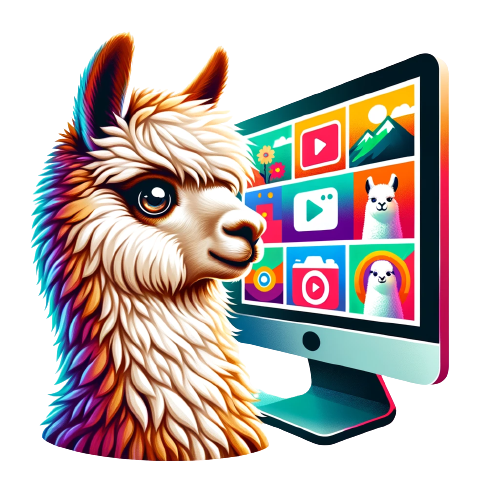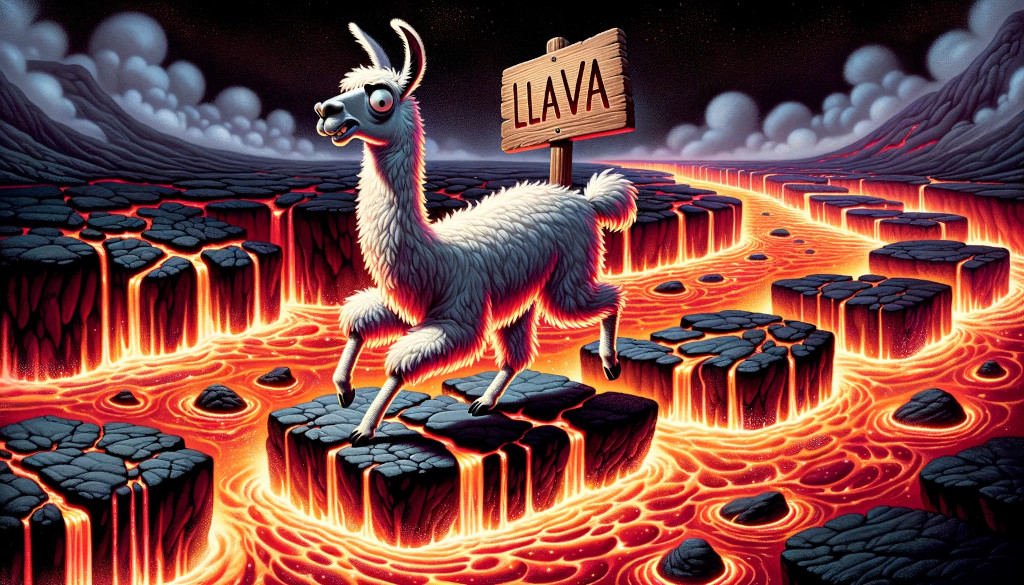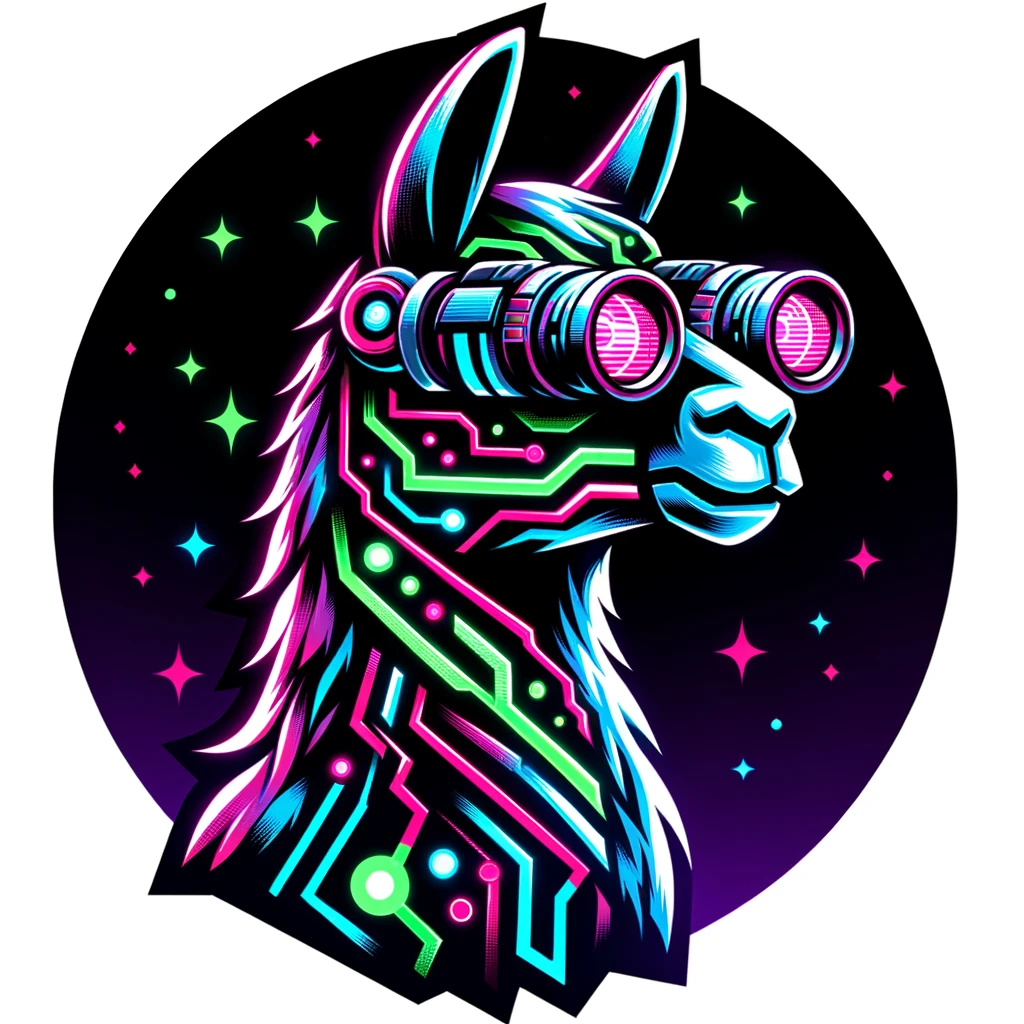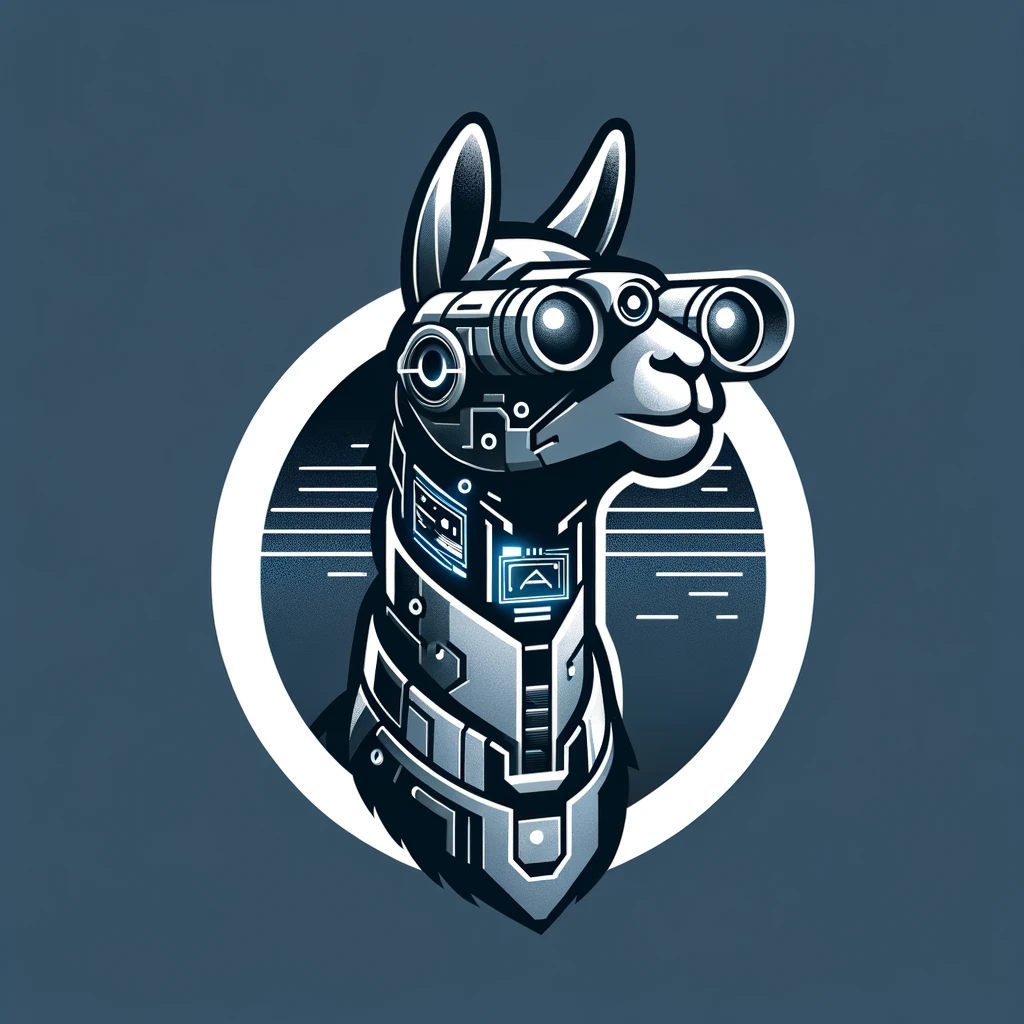video-llava
Maintainer: nateraw

464

| Property | Value |
|---|---|
| Run this model | Run on Replicate |
| API spec | View on Replicate |
| Github link | View on Github |
| Paper link | View on Arxiv |
Create account to get full access
Model Overview
Video-LLaVA is a powerful AI model developed by the PKU-YuanGroup that exhibits remarkable interactive capabilities between images and videos. The model is built upon the foundations of LLaVA, an efficient large language and vision assistant, and it showcases significant superiority when compared to models specifically designed for either images or videos.
The key innovation of Video-LLaVA lies in its ability to learn a united visual representation by aligning it with the language feature space before projection. This approach enables the model to perform visual reasoning capabilities on both images and videos simultaneously, despite the absence of image-video pairs in the dataset. The extensive experiments conducted by the researchers demonstrate the complementarity of modalities, highlighting the model's remarkable performance across a wide range of tasks.
Model Inputs and Outputs
Video-LLaVA is a versatile model that can handle both image and video inputs, allowing for a diverse range of applications. The model's inputs and outputs are as follows:
Inputs
- Image Path: The path to an image file that the model can process and analyze.
- Video Path: The path to a video file that the model can process and analyze.
- Text Prompt: A natural language prompt that the model can use to generate relevant responses based on the provided image or video.
Outputs
- Output: The model's response to the provided text prompt, which can be a description, analysis, or other relevant information about the input image or video.
Capabilities
Video-LLaVA exhibits remarkable capabilities in both image and video understanding tasks. The model can perform various visual reasoning tasks, such as answering questions about the content of an image or video, generating captions, and even engaging in open-ended conversations about the visual information.
One of the key highlights of Video-LLaVA is its ability to leverage the complementarity of image and video modalities. The model's unified visual representation allows it to excel at tasks that require cross-modal understanding, such as zero-shot video question-answering, where it outperforms models designed specifically for either images or videos.
What Can I Use It For?
Video-LLaVA can be a valuable tool in a wide range of applications, from content creation and analysis to educational and research purposes. Some potential use cases include:
- Video Summarization and Captioning: The model can generate concise summaries or detailed captions for video content, making it useful for video indexing, search, and recommendation systems.
- Visual Question Answering:
Video-LLaVAcan answer questions about the content of images and videos, enabling interactive and informative experiences for users. - Video-based Dialogue Systems: The model's capabilities in understanding and reasoning about visual information can be leveraged to build more engaging and contextual conversational agents.
- Multimodal Content Generation:
Video-LLaVAcan be used to generate creative and coherent content that seamlessly combines visual and textual elements, such as illustrated stories or interactive educational materials.
Things to Try
With Video-LLaVA's impressive capabilities, there are many exciting possibilities to explore. Here are a few ideas to get you started:
- Experiment with different text prompts: Try asking the model a wide range of questions about images and videos, from simple factual queries to more open-ended, creative prompts. Observe how the model's responses vary and how it leverages the visual information.
- Combine image and video inputs: Explore the model's ability to reason about and synthesize information from both image and video inputs. See how the model's understanding and responses change when provided with multiple modalities.
- Fine-tune the model: If you have domain-specific data or task requirements, consider fine-tuning
Video-LLaVAto further enhance its performance in your area of interest. - Integrate the model into your applications: Leverage
Video-LLaVA's capabilities to build innovative, multimodal applications that can provide enhanced user experiences or automate visual-based tasks.
By exploring the capabilities of Video-LLaVA, you can unlock new possibilities in the realm of large language and vision models, pushing the boundaries of what's possible in the field of artificial intelligence.
This summary was produced with help from an AI and may contain inaccuracies - check out the links to read the original source documents!
Related Models
🏋️
Video-LLaVA-7B

75
Video-LLaVA-7B is a powerful AI model developed by LanguageBind that exhibits remarkable interactive capabilities between images and videos, despite the absence of image-video pairs in the dataset. The model combines a pre-trained large language model with a pre-trained vision encoder, enabling it to perform visual reasoning on both images and videos simultaneously. The model's key highlight is its "simple baseline, learning united visual representation by alignment before projection", which allows it to bind unified visual representations to the language feature space. This enables the model to leverage the complementarity of image and video modalities, showcasing significant superiority compared to models specifically designed for either images or videos. Similar models include video-llava by nateraw, llava-v1.6-mistral-7b-hf by llava-hf, nanoLLaVA by qnguyen3, and llava-13b by yorickvp, all of which aim to push the boundaries of visual-language models. Model inputs and outputs Video-LLaVA-7B is a multimodal model that takes both text and visual inputs to generate text outputs. The model can handle a wide range of visual-language tasks, from image captioning to visual question answering. Inputs Text prompt**: A natural language prompt that describes the task or provides instructions for the model. Image/Video**: An image or video that the model will use to generate a response. Outputs Text response**: The model's generated response, which could be a caption, answer, or other relevant text, depending on the task. Capabilities Video-LLaVA-7B is capable of performing a variety of visual-language tasks, including image captioning, visual question answering, and multimodal chatbot use cases. The model's unique ability to handle both images and videos sets it apart from models designed for a single visual modality. What can I use it for? You can use Video-LLaVA-7B for a wide range of applications that involve both text and visual inputs, such as: Image and video description generation**: Generate captions or descriptions for images and videos. Multimodal question answering**: Answer questions about the content of images and videos. Multimodal dialogue systems**: Develop chatbots that can understand and respond to both text and visual inputs. Visual reasoning**: Perform tasks that require understanding and reasoning about visual information. Things to try One interesting thing to try with Video-LLaVA-7B is to explore its ability to handle both images and videos. You could, for example, ask the model questions about the content of a video or try generating captions for a sequence of frames. Additionally, you could experiment with the model's performance on specific visual-language tasks and compare it to models designed for single-modal inputs.
Updated Invalid Date

llava-13b

16.7K
llava-13b is a large language and vision model developed by Replicate user yorickvp. The model aims to achieve GPT-4 level capabilities through visual instruction tuning, building on top of large language and vision models. It can be compared to similar multimodal models like meta-llama-3-8b-instruct from Meta, which is a fine-tuned 8 billion parameter language model for chat completions, or cinematic-redmond from fofr, a cinematic model fine-tuned on SDXL. Model inputs and outputs llava-13b takes in a text prompt and an optional image, and generates text outputs. The model is able to perform a variety of language and vision tasks, including image captioning, visual question answering, and multimodal instruction following. Inputs Prompt**: The text prompt to guide the model's language generation. Image**: An optional input image that the model can leverage to generate more informative and contextual responses. Outputs Text**: The model's generated text output, which can range from short responses to longer passages. Capabilities The llava-13b model aims to achieve GPT-4 level capabilities by leveraging visual instruction tuning techniques. This allows the model to excel at tasks that require both language and vision understanding, such as answering questions about images, following multimodal instructions, and generating captions and descriptions for visual content. What can I use it for? llava-13b can be used for a variety of applications that require both language and vision understanding, such as: Image Captioning**: Generate detailed descriptions of images to aid in accessibility or content organization. Visual Question Answering**: Answer questions about the contents and context of images. Multimodal Instruction Following**: Follow instructions that combine text and visual information, such as assembling furniture or following a recipe. Things to try Some interesting things to try with llava-13b include: Experimenting with different prompts and image inputs to see how the model responds and adapts. Pushing the model's capabilities by asking it to perform more complex multimodal tasks, such as generating a step-by-step guide for a DIY project based on a set of images. Comparing the model's performance to similar multimodal models like meta-llama-3-8b-instruct to understand its strengths and weaknesses.
Updated Invalid Date

llava-v1.6-vicuna-13b

19.9K
llava-v1.6-vicuna-13b is a large language and vision AI model developed by yorickvp, building upon the visual instruction tuning approach pioneered in the original llava-13b model. Like llava-13b, it aims to achieve GPT-4 level capabilities in combining language understanding and visual reasoning. Compared to the earlier llava-13b model, llava-v1.6-vicuna-13b incorporates improvements such as enhanced reasoning, optical character recognition (OCR), and broader world knowledge. Similar models include the larger llava-v1.6-34b with the Nous-Hermes-2 backbone, as well as the moe-llava and bunny-phi-2 models which explore different approaches to multimodal AI. However, llava-v1.6-vicuna-13b remains a leading example of visual instruction tuning towards building capable language and vision assistants. Model Inputs and Outputs llava-v1.6-vicuna-13b is a multimodal model that can accept both text prompts and images as inputs. The text prompts can be open-ended instructions or questions, while the images provide additional context for the model to reason about. Inputs Prompt**: A text prompt, which can be a natural language instruction, question, or description. Image**: An image file URL, which the model can use to provide a multimodal response. History**: A list of previous message exchanges, alternating between user and assistant, which can help the model maintain context. Temperature**: A parameter that controls the randomness of the model's text generation, with higher values leading to more diverse outputs. Top P**: A parameter that controls the model's text generation by only sampling from the top p% of the most likely tokens. Max Tokens**: The maximum number of tokens the model should generate in its response. Outputs Text Response**: The model's generated response, which can combine language understanding and visual reasoning to provide a coherent and informative answer. Capabilities llava-v1.6-vicuna-13b demonstrates impressive capabilities in areas such as visual question answering, image captioning, and multimodal task completion. For example, when presented with an image of a busy city street and the prompt "Describe what you see in the image", the model can generate a detailed description of the various elements, including buildings, vehicles, pedestrians, and signage. The model also excels at understanding and following complex, multi-step instructions. Given a prompt like "Plan a trip to New York City, including transportation, accommodation, and sightseeing", llava-v1.6-vicuna-13b can provide a well-structured itinerary with relevant details and recommendations. What Can I Use It For? llava-v1.6-vicuna-13b is a powerful tool for building intelligent, multimodal applications across a wide range of domains. Some potential use cases include: Virtual assistants**: Integrate the model into a conversational AI assistant that can understand and respond to user queries and instructions involving both text and images. Multimodal content creation**: Leverage the model's capabilities to generate image captions, visual question-answering, and other multimodal content for websites, social media, and marketing materials. Instructional systems**: Develop interactive learning or training applications that can guide users through complex, step-by-step tasks by understanding both text and visual inputs. Accessibility tools**: Create assistive technologies that can help people with disabilities by processing multimodal information and providing tailored support. Things to Try One interesting aspect of llava-v1.6-vicuna-13b is its ability to handle finer-grained visual reasoning and understanding. Try providing the model with images that contain intricate details or subtle visual cues, and see how it can interpret and describe them in its responses. Another intriguing possibility is to explore the model's knowledge and reasoning about the world beyond just the provided visual and textual information. For example, you could ask it open-ended questions that require broader contextual understanding, such as "What are some potential impacts of AI on society in the next 10 years?", and see how it leverages its training to generate thoughtful and well-informed responses.
Updated Invalid Date

llava-v1.6-vicuna-7b

16.7K
llava-v1.6-vicuna-7b is a visual instruction-tuned large language and vision model created by Replicate that aims to achieve GPT-4 level capabilities. It builds upon the llava-v1.5-7b model, which was trained using visual instruction tuning to connect language and vision. The llava-v1.6-vicuna-7b model further incorporates the Vicuna-7B language model, providing enhanced language understanding and generation abilities. Similar models include the llava-v1.6-vicuna-13b, llava-v1.6-34b, and llava-13b models, all created by Replicate's yorickvp. These models aim to push the boundaries of large language and vision AI assistants. Another related model is the whisperspeech-small from lucataco, which is an open-source text-to-speech system built by inverting the Whisper model. Model inputs and outputs llava-v1.6-vicuna-7b is a multimodal AI model that can accept both text and image inputs. The text input can be in the form of a prompt, and the image can be provided as a URL. The model then generates a response that combines language and visual understanding. Inputs Prompt**: The text prompt provided to the model to guide its response. Image**: The URL of an image that the model can use to inform its response. Temperature**: A value between 0 and 1 that controls the randomness of the model's output, with lower values producing more deterministic responses. Top P**: A value between 0 and 1 that controls the amount of the most likely tokens the model will sample from during text generation. Max Tokens**: The maximum number of tokens the model will generate in its response. History**: A list of previous chat messages, alternating between user and model responses, that the model can use to provide a coherent and contextual response. Outputs Response**: The model's generated text response, which can incorporate both language understanding and visual information. Capabilities llava-v1.6-vicuna-7b is capable of generating human-like responses to prompts that involve both language and visual understanding. For example, it can describe the contents of an image, answer questions about an image, or provide instructions for a task that involves both text and visual information. The model's incorporation of the Vicuna language model also gives it strong language generation and understanding capabilities, allowing it to engage in more natural and coherent conversations. What can I use it for? llava-v1.6-vicuna-7b can be used for a variety of applications that require both language and vision understanding, such as: Visual Question Answering**: Answering questions about the contents of an image. Image Captioning**: Generating textual descriptions of the contents of an image. Multimodal Dialogue**: Engaging in conversations that involve both text and visual information. Multimodal Instruction Following**: Following instructions that involve both text and visual cues. By combining language and vision capabilities, llava-v1.6-vicuna-7b can be a powerful tool for building more natural and intuitive human-AI interfaces. Things to try One interesting thing to try with llava-v1.6-vicuna-7b is to provide it with a series of related images and prompts to see how it can maintain context and coherence in its responses. For example, you could start with an image of a landscape, then ask it follow-up questions about the scene, or ask it to describe how the scene might change over time. Another interesting experiment would be to try providing the model with more complex or ambiguous prompts that require both language and visual understanding to interpret correctly. This could help reveal the model's strengths and limitations in terms of its multimodal reasoning capabilities. Overall, llava-v1.6-vicuna-7b represents an exciting step forward in the development of large language and vision AI models, and there are many interesting ways to explore and understand its capabilities.
Updated Invalid Date